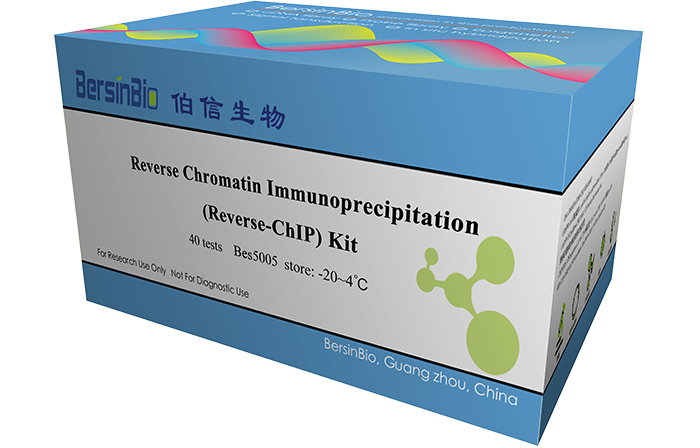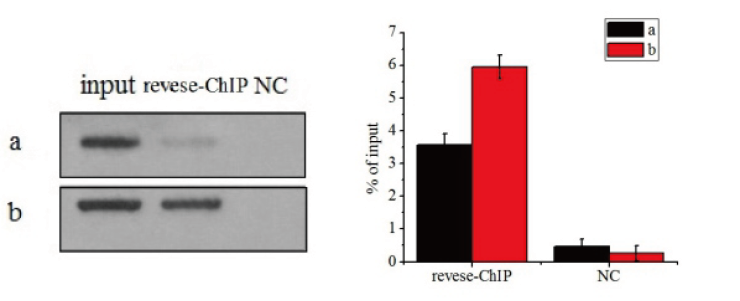Product introduction:
Reverse-ChIP is a PICh technology that uses DNA probes and MS to study chromatin binding proteins in vivo.Reverse-ChIP can comprehensively and systematically identify proteins related to target DNA sites, especially looking for regulatory proteins corresponding to known DNA elements.It has important application value in discovering and identifying proteins related to target DNA sites and studying DNA-protein interactions.(This kit is for scientific research purposes only)
Compared with ChIP, Reverse-ChIP is a new method for analyzing DNA-protein interactions in vivo.It uses a specific nucleic acid probe to capture the target DNA fragment and the protein bound to it, and detects it with a MS or Western Blot to confirm that the target DNA site is all bound to the protein.It requires a large amount of cells and can also be applied to species such as microorganisms and plants.
The protein and DNA in the cell are cross-linked, and the ultrasound cuts it randomly into small chromatin fragments within a certain length.Then a specific nucleic acid probe is used to capture the target DNA fragment and the protein bound to it, and the protein is detected with a MS or Western Blot to determine all related proteins at the target DNA site.

Technical process:

Result example:

Product features:
1.The fastest kit among similar products on the market, the whole process takes less than 6 hours.
2.The operation is simple and the result is reliable.
3.High repeatability, strong specificity and high sensitivity.
4.BersinbioTM is exclusively developed and has independent intellectual property rights.
Instructions
Bes5005 reverse-ChIP
Articles
【In 2023】
Article:Hypoxia promotes EV secretion by impairing lysosomal homeostasis in HNSCC through negative regulation of ATP6V1Aby HIF-1α
Periodicals:Journal of Extracellular Vesicles
IF:16.000
【In 2019】
Article:The effect of AP-2δ on transcription of the Prestin gene in HEI-OC1 cells upon oxidative stress
Periodicals:Cellular & Molecular Biology Letters
IF:8.300